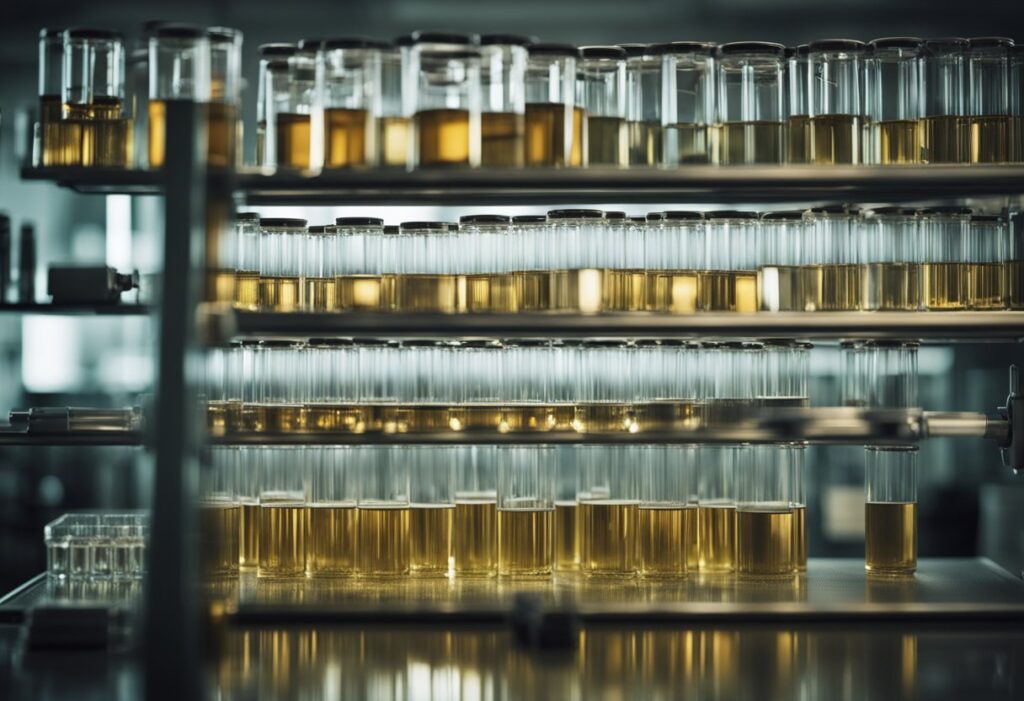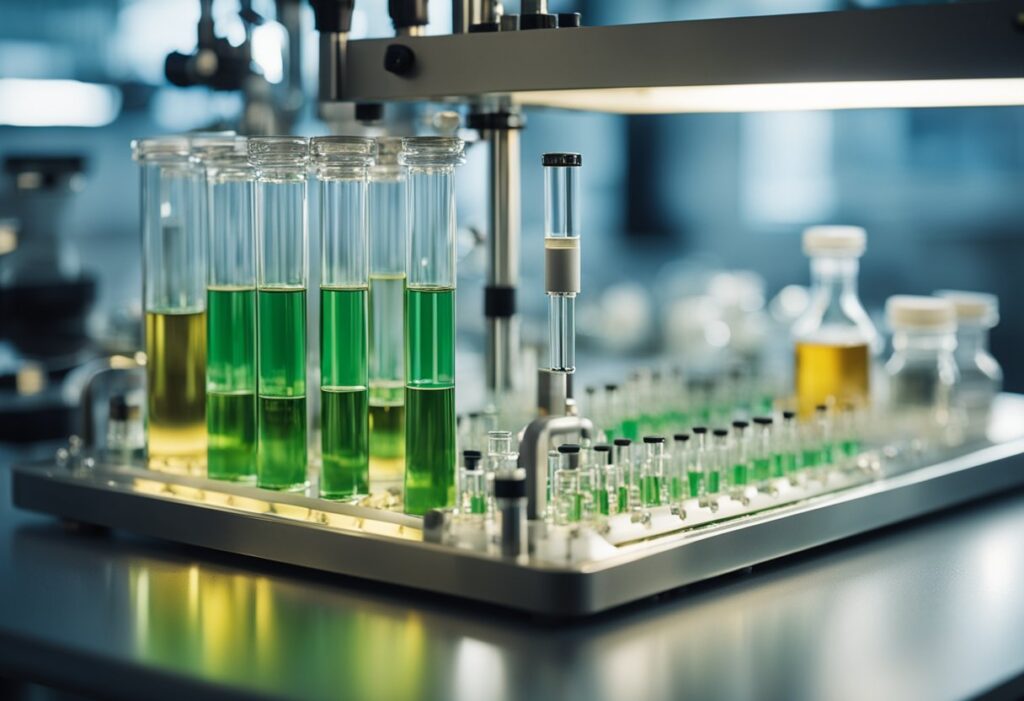In the realm of cancer prevention, certain compounds hold promise due to their potential to modulate biological pathways that can lead to the disease. Diindolylmethane, often abbreviated as DIM, is one such compound that has garnered attention in scientific circles. Found in cruciferous vegetables like broccoli and Brussels sprouts, DIM is a naturally occurring substance that may play a role in cancer chemoprevention, a strategy aimed at reducing the risk of cancer through natural or synthetic agents.

Your understanding of DIM’s potential in cancer prevention is bolstered by research examining its effects at the cellular level. This nutrient has shown the ability to influence hormone metabolism and regulate genes involved in proliferation, survival, and angiogenesis of cancerous cells. This indicates that DIM might not only help prevent cancer onset but also impede the progression of established tumors.
The interest in DIM extends to its application in clinical settings, particularly for hormone-driven cancers. Studies have suggested that this compound could be effective in managing conditions such as prostate and breast cancer by modulating estrogen metabolism and exerting anti-inflammatory effects. While further research is necessary to fully elucidate its mechanisms and optimal usage, incorporating DIM into your diet through cruciferous vegetable consumption could be a proactive step towards your overall health and cancer prevention.
Chemical Composition and Sources of Diindolylmethane

Before exploring the depths of diindolylmethane’s benefits, it’s essential to understand what it is and where you can find it. This compound is a remarkable bioactive product that links closely with cancer prevention.
Occurrence in Cruciferous Vegetables
Diindolylmethane is a phytochemical found naturally in cruciferous vegetables such as broccoli, cauliflower, cabbage, and brussels sprouts. These vegetables are rich in glucosinolates, which are sulfur-containing compounds. Specifically, diindolylmethane is a metabolite derived from indole glucosinolate, known as glucobrassicin. When you consume and digest cruciferous vegetables, the glucosinolates they contain are broken down and can form bioactive compounds like diindolylmethane.
Synthesis and Derivatives
Upon ingestion, enzymes present in the gut flora catalyze the conversion of glucobrassicin to indole-3-carbinol (I3C). Through a further acid-catalyzed condensation reaction that occurs in the stomach, I3C is then converted to a variety of compounds, one of which is diindolylmethane. This transformation illustrates the complex interactions and synthesis of bioactive compounds within your body, making these vegetables a powerful component in your diet for cancer prevention. Though diindolylmethane is naturally synthesized in the body, it also forms the basis for several derivatives in scientific research aimed at unraveling its therapeutic potential.
Mechanisms of Action in Cancer Prevention

Diindolylmethane (DIM) plays a multifaceted role in cancer prevention, targeting different pathways that are crucial for cancer cell growth and proliferation. Here, you’ll learn about how DIM influences estrogen metabolism, leads to apoptosis and cell cycle arrest, and interacts with specific molecular targets.
Influence on Estrogen Metabolism
Your estrogen metabolism is vital to maintaining cellular health, and DIM has been shown to positively influence this process. It promotes the conversion of estrogen to less potent forms, reducing the risk of estrogen-promoted cancer growth. By altering estrogen metabolism, DIM exhibits chemopreventive properties that may lower your risk of developing hormone-sensitive cancers.
Induction of Apoptosis and Cell Cycle Arrest
Apoptosis is a programmed cell death mechanism crucial for the removal of damaged or cancerous cells. DIM induces apoptosis in abnormal cells, helping to prevent the progression of cancer. Additionally, DIM can halt the growth of cancer cells by causing cell cycle arrest. These actions make DIM a potent antiproliferative agent with significant anticancer potential.
Interaction with Molecular Targets
DIM interacts with a variety of molecular targets that play a role in cancer development. One such target is the aryl hydrocarbon receptor (AHR), which when modulated by DIM, can lead to anti-inflammatory and anticancer effects. Moreover, DIM has been linked to the suppression of histone deacetylase activity, a key component in the regulation of gene expression and an important target for cancer prevention therapies.
Clinical Evidence and Research

Diindolylmethane (DIM) has attracted significant interest in the realm of cancer prevention due to its presence in cruciferous vegetables and potential effects on various types of cancer. Here, we explore the human studies and clinical trials that provide insight into its efficacy.
Human Cancer Risk and Epidemiological Studies
Epidemiologic evidence suggests that your intake of cruciferous vegetables, which are rich in compounds like DIM, is inversely related to the risk of developing certain cancers. Studies supported by the Israel Cancer Association have indicated that the metabolites of these vegetables may lower your risk of breast cancer. Correlations between DIM intake from dietary sources and reduction in prostate cancer and lung cancer risks have also been observed.
Preclinical and Clinical Trials
A number of preclinical studies on animal models indicate DIM’s potential in chemoprevention. Moving into human trials, clinical trial identifier NCT02197000 examines DIM’s ability to affect risk factors associated with breast cancer. In addition to breast cancer, studies have examined DIM’s influence on colorectal cancer and prostate cancer. These clinical trials aim to provide concrete evidence of DIM’s impact on cancer cell growth and progression, informing future recommendations for cancer prevention strategies.
Conclusion
Recent studies indicate that Diindolylmethane (DIM), a compound found in cruciferous vegetables, may play a role in cancer prevention, particularly breast cancer. Your dietary choices could have a substantial impact on your health, and incorporating DIM through a regular intake of vegetables like broccoli, cauliflower, and brussels sprouts can support your body’s defense mechanisms.
Research points towards DIM’s potential to modulate estrogen metabolism, which is of interest in the context of hormone-sensitive cancers. The regulatory effects of DIM on estrogen receptors and its interaction with drugs like tamoxifen are areas that deserve attention for their implications in breast cancer treatments. For healthy individuals with a genetic predisposition to breast cancer, such as BRCA mutation carriers, the inclusion of DIM may be a proactive step in primary prevention, though it is important to recognize that studies have had limitations, such as being nonrandomized and relatively short in duration.
In your journey to optimize health, understanding the science-backed benefits of dietary compounds and their preventative roles is essential. But remember to maintain a balanced perspective and await further high-quality clinical trials before considering DIM supplements as a definitive preventative strategy. Your lifestyle choices, including diet, are crucial, and the informed inclusion of naturally occurring compounds like DIM could be considered a positive step in cancer prevention.
Frequently Asked Questions
In this section, you’ll find specific information on Diindolylmethane (DIM) as it relates to cancer prevention, including its benefits, dosage concerns, liver health implications, timing of dosing, and possible side effects.
What are the potential benefits of taking Diindolylmethane for individuals concerned with breast cancer recurrence?
For individuals concerned with the recurrence of breast cancer, studies suggest that Diindolylmethane, a compound derived from cruciferous vegetables, may support chemoprevention. It has been linked to potential anticarcinogenic effects, particularly relating to hormone-sensitive cancers such as breast cancer.
How does Diindolylmethane dosage impact estrogen dominance in the body?
The right dosage of Diindolylmethane can influence estrogen metabolism, potentially leading to a favorable shift in estrogen balance, thus addressing estrogen dominance. This can be crucial for both men and women regarding various hormone-driven concerns.
Can Diindolylmethane supplementation affect liver health, and if so, how?
Diindolylmethane supplementation is thought to support liver health by promoting the detoxification pathways involved in hormone metabolism. However, as with any dietary supplement, it is crucial to monitor liver function, especially if taken in high doses.
Is there an optimal time of day for taking Diindolylmethane to maximize its efficacy?
There is currently no consensus on an optimal time for taking Diindolylmethane. However, for best absorption, it is often recommended to take DIM with meals.
What are the known side effects associated with Diindolylmethane supplementation?
While Diindolylmethane is generally considered safe, some individuals may experience side effects such as changes in bowel movements or headaches. It’s important to start with a lower dose of DIM to assess tolerance and to consult a healthcare provider, especially if experiencing unexpected symptoms.